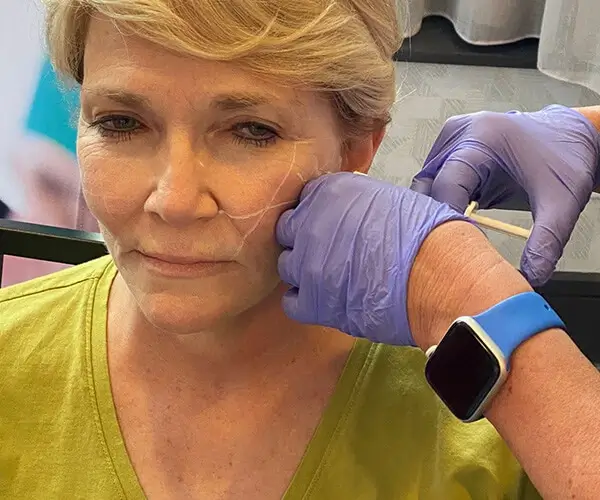Can You Inject Botox® in Hairline?
By Dr. Stephen Cosentino
PRESIDENT OF EMPIRE MEDICAL TRAINING
With more than a dozen FDA-approved uses for Botox® and many more commonly accepted “off-label” uses for cosmetic and therapeutic applications, it’s a challenge to keep track of every possible Botox injection site. At this point, remembering where not to inject Botox is easier.
The upper forehead, hairline, and scalp areas generate a great deal of confusion among Botox patients (and some providers too). The FDA hasn’t officially approved hairline Botox injections for any particular cosmetic or therapeutic use, leading some patients to believe they’re not a good idea. But providers frequently target the area for off-label uses with good results.
Let’s dispel the confusion and look at why Botox can be injected in the hairline — and whether the procedure might be right for you.
Botox in Hairline: Why It’s Done
Botox is generally injected into the hairline and surrounding areas to improve the appearance of the forehead and brow (brow lift) or to reduce perspiration around the hairline.
Reducing Scalp and Hairline Perspiration
This application first gained traction in the mid-2010s, though some providers were doing it earlier.
As is the case elsewhere on the body, targeted Botox injections on and just behind the hairline can reduce natural perspiration production. Working locally, Botox blocks the specific nerve action responsible for stimulating perspiration without affecting sweating capability elsewhere on the head and neck (which could be harmful).
Benefits of Botox for hairline perspiration reduction include:
- Less interference with hair styling that responds poorly to moisture
- Less “drippage” in the eyes during vigorous exercise
- Less makeup streaking
The evidence for Botox reducing hairline perspiration isn’t as strong as for the underarms, groin, and feet, which may be why the FDA hasn’t approved this particular application yet. However, the risk profile is acceptable, encouraging many providers to target this popular off-label use.
Botox Brow Lift
Botox brow lift procedures generally target the central and lower portions of the forehead muscles responsible for lifting the eyebrow (the frontalis muscles).
However, emerging evidence suggests that injections around or even behind the hairline — targeting the occipitalis muscle — may augment traditional brow lift results. More research is needed to evaluate these signals, but anecdotal reports indicate hairline Botox is best used in conjunction with chemical or thread brow lifts.
Should You Get a Botox Hairline Injection?
“Off-label” is a scary-sounding description for a relatively low-risk procedure. That said, not everyone is a good candidate for hairline Botox (or Botox more generally). Let’s briefly review some possible side effects and alternatives.
Possible Side Effects of Botox in Hairline
Common side effects of hairline Botox include:
- Itching or redness around the injection site
- Temporary pain around the injection site
- Asymmetric presentation (one brow is higher than the other)
- Ptosis (eyelid drooping), though this is unlikely for hairline-only injections)
As a patient, you can reduce (but not eliminate) the risk of these side effects and complications by working with a board-certified, licensed medical provider who has completed a comprehensive botulinum toxin training course and has extensive practice experience.
Alternatives to Botox in Hairline
There’s no real alternative to hairline Botox for perspiration management. Alternatives to Botox brow lifts include:
- Traditional plastic surgery (surgical brow lift)
- Chemical brow lift
- PDO thread lift
Each of these alternatives has its own risk profile. Consult your provider to determine the best option for your specific needs.


